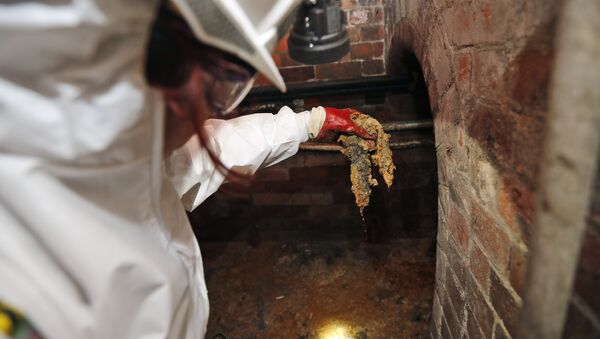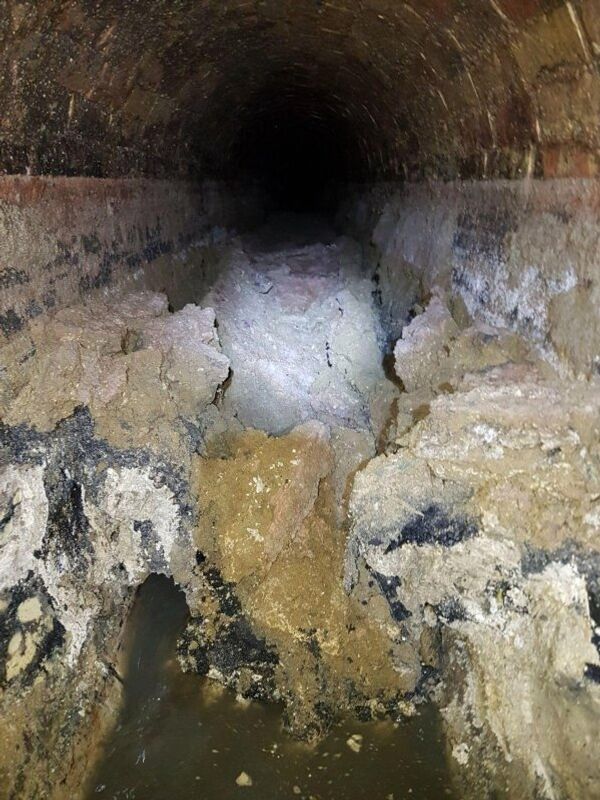Discovered in September 2017, the Whitechapel sewer blockage became an international media sensation as one of the largest fatbergs ever found. The monster weighed 130 tonnes and was over 250 meters long — almost the length of Tower Bridge. It took a team of eight "flushers," working nine hours a day, seven days a week in hazardous conditions, more than two months to remove.
Sanitation workers who remove fatbergs need to don ear protectors and breathing apparatus, as fatbergs can emit sudden belches of hydrogen sulphide, carbon monoxide, and methane: https://t.co/TzDTGHHwGt pic.twitter.com/qEiRUGMgND
— Josa Deek (@josadeek) 12 февраля 2018 г.
The toxic mass of congealed sewage, oil, hypodermic needles, wet wipes and sanitary products has long been on the Museum of London's wishlist. The exhibition dedicated to the story of the nine-week battle to remove the fatberg has finally opened to the public on Friday, displaying the last-remaining chunk that had first been air-dried and analyzed for safety reasons.
Our version of a walking tour of London: see for yourself the monster #Fatberg everyone's talking about: pic.twitter.com/LNd81wAliO
— Thames Water (@thameswater) 12 сентября 2017 г.
"Nobody has ever tried to preserve a fatberg before — they normally just take them out and destroy them." Vyki Sparkes, the curator of the exhibition, told reporters. "This is a live experiment basically. It's its own little microworld."
According to the Museum of London collection care manager Andy Holbrook, the object still had flies living in it five months after it was dismantled. From a distance, it may look like a space stone, but you realize that the reality is much uglier as soon as you come closer. What's also interesting about the fatberg is that it is still changing and crumbling while being on display.
Are you brave enough to face the #fatberg? If you dare visit our free display (until 1 July) you can see a piece of the Whitechapel fatberg. Find out more: https://t.co/dvYEuV9KWB pic.twitter.com/LdJlGojqTv
— Museum of London (@MuseumofLondon) 10 февраля 2018 г.
"It's dried out over three months. We have seen it change color from brown to more of an ivory color," Holbrook said, as cited by the New York Post.
According to the workers of the museum, they wanted to send a message to people that if they put fat, oil, grease, wet wipes down the toilet or down the sink, they are contributing to the creation of monster blockages in London's narrow Victorian sewers that could potentially flood the city and cost a lot of money to remove.
The rest of the fatberg was reportedly broken up and is now used as biofuel to power a London bus. The display will run until July 1.



